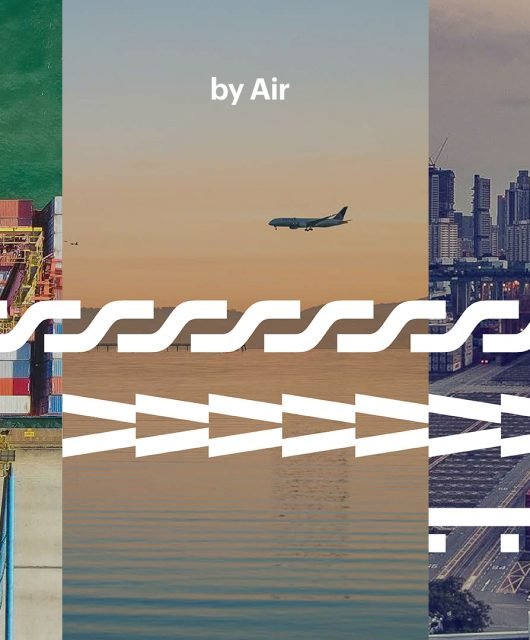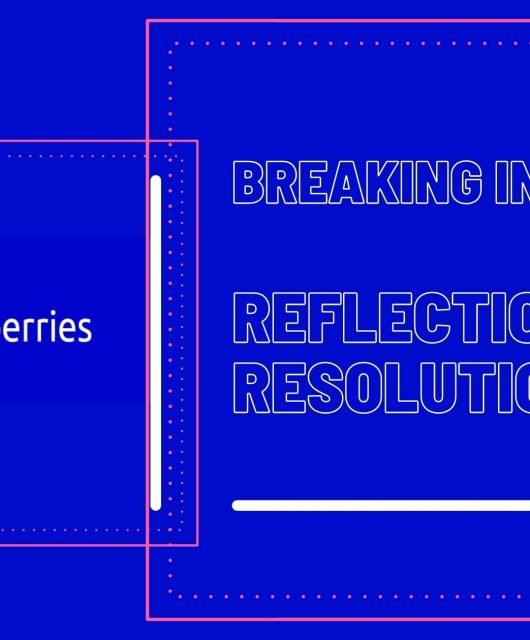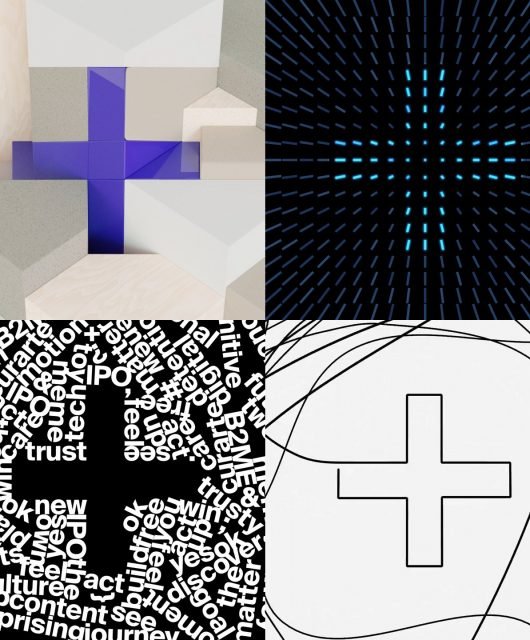2020 is over! Congratulations, you made it to 2021! It has been an exceptionally tough year for humankind. Covid-19 and its aftermath has completely reshaped the ecosystem which brands work in, consumers engage with and agencies service.
Today we’re debuting a Brandberries original ‘Breaking Into 2021: Reflections And Resolutions’; a content series in which we gathered the insightful opinions and reflections of the industry movers and shakers on 2020 and what to expect in 2021 for all communications disciplines; Brand Strategy, Consumer Behavior, Creative Industry, Digital Transformation and Brand Communications.
Ahmed Hafez (Fizo) Younis, Creative Shop Lead MENA,

“Toto, I have a feeling we’re not in Kansas anymore.” A post COVID-19 world surely strikes a great resemblance to the strange and magical world of Oz. While I’m not here to critique a classic, I couldn’t help but think of Dorothy and how every new challenge she faced was also a new opportunity.
Yes, the world was hit hard by a global pandemic that not only impacted the lives of people but also the face of brands, businesses, and consumers. Still, with constraints comes creativity and, in my opinion, this impact has reshaped how brands are thinking of consumers and how consumers are thinking of brands in what can only be described as positive change.
While I don’t have all the answers, I do have some pointers that can make sailing these turbulent waters a lot smoother; whether you’re on a creative team or on a brand team, you have to start with yourself.
Lead With Empathy
In light of the current and future realities of the industry, it is important to first empathize with the changes and disruptions happening in the lives of your customers and in the wider community before thinking about business. As the situation evolves, be sure to regularly revisit your marketing efforts to ensure that your messages resonate and remain relevant to your audiences.
Be Yourself
The voice and role of your brand or product in people’s lives is what has drawn people to you – this was true in the past but will certainly also be true in the future; stick to it. The more honest and true you are to yourself and to what people have come to expect of you, the better you’ll be able to connect – play to your strengths and be uniquely you.
Add Value
The ideas you build should contribute something to your audience and to the communities you care about – not just in the immediate aftermath but in the more distant future, too. Think about how your brand can inspire them or provide them with something they need. This can come in the form of mental, emotional, or financial support; access to a much-needed cathartic outlet; or even tools to help them thrive in their new reality.
Now more than ever, good for people …is good for business.
Ali Cheikhali, Creative Strategy Lead,
Google MENA

The Messy Middle will only get messier and brands and agencies will need to make themselves comfortable in it if they are to survive. COVID-19 has undoubtedly accelerated digital transformation across companies. E-commerce alone registered a decade of growth in 8 weeks. With that acceleration came an increased need for business performance. And that need in turn put an unprecedented pressure on marketing and advertising to adapt to these times and be more effective than ever.
This of course has had implications over the user journey that has shifted in its majority online and that is what brands and agencies, together, need to navigate the most in 2021. Now we’ve always known that what happens between trigger and purchase decision-making is not linear. We know there is a complicated web of touch points that differs from person to person. What is less clear however, is how shoppers process all of the information and choice they discover along the way. This is what we at Google called the messy middle in our latest 2020 user insight research – and it’s only going to get messier in 2021.
That messiness will force brands and agencies to be more agile than ever. No more words on slides, for real this time. This will be the year of creative experimentation, embracing data more than ever and good, cheap and fast will become the proposition that will set apart the survivors from the obsolete. More consolidations across creative networks as they seek to tangibly impact clients bottom lines. Much less of the typical big brand building pieces as brand build takes a new form with more lower funner work stemming up across the board. This will drive more accountability from clients towards their creative partners. It will be a transitional year for all of us in the creative world, and transition comes with discomfort as does growth. Ultimately, all for the better. 2021 will be the year that the creative industry has always discussed implementing but never did. Now we’ll have to! At least I hope so.
Borja Borrero, Executive Creative Director EMEA, India & LatAm,

Interbrand
Brands are now more important than ever, but their role has changed dramatically. What used to be about creating differentiation in an age of abundance is now about staying relevant in a context of turbulence. Branding and brand design, as other multiple disciplines, are now facing four key forces of change:
- End of competitive advantage: customers are exposed to more frequent innovation, deriving from a hyperdynamic competition.
- Abundance of choice: customers are used to an abundance of options competing for their attention and money.
- Speed of adoption: Innovation becomes part of people’s lives very quickly, changing their expectations.
- Shorter feedbacks loops: consumers expect new, better and different on a daily basis.
In order to thrive in an anxious and constantly changing world, brand design must combine a deep, interdisciplinary understanding of people, of businesses, and of their interactions to be able to design brand experiences ahead of expectation.
Outstanding brand experiences shape change by ensuring the business influences how people think, feel and ultimately behave. Effective brand design transforms insight into those experiences that change behavior and improve the way people interact with a brand, a business or a category. Our aim as brand designers is now to ensure that ‘everything communicates’, delivering the right combination of desire and utility in every moment. In other words: to use the power of design, language and technology to create experiences that make life better for people and create a new normal. It’s not about visual consistency as much as it is about tangible behavioral change. The ultimate test of our work is not what we’ve done, but what others do.
That said, the future of brand design is impacted by a series of trends that have to do with more global demands and scenarios:
- The demand and need for sustainable design, which uses the necessary resources in an efficient way. As brand designers, it’s time to look for creative and new ways of communicating more with less.
- The challenge of building coherent ecosystems for brands that integrate, as is already the case in sectors such as fashion, new possibilities such as virtual design or 3D design.
- The rise of digital consumption caused by lockdowns all around the world requires a real and powerful investment in consumer-centric design that facilitate and enrich the user experience in online environments.
- The overexposure to brands and advertising impacts typical of today’s world, as well as the need for a fluid and simple experience, or the need for clarity and differentiation in digital environments, drive simplicity and minimalism in brand design.
- Finally, 2020 has also been marked by a remarkable growth in social awareness. Consumers are increasingly demanding that brands are aligned with ethical and socio-political values. Consequently, inclusive design might open a new window of opportunity for brands to increase their relevance among an increasingly diverse audience.
Geoff Cook, Partner,

Base Design
“AI’s are going to have the ability to design! Robots are poised to take over the creative industries!” So often in year ahead prognostications, big thinkers put forth even bigger ideas to provoke thought and debate. However, in our post-COVID19 era, the reality of what is to come in 2021 is much more simple.
The move to digital has been underway for years. The virus simply accelerated this shift and at a rate unlike any other save the initial dot com boom itself. This past year, companies, cultural institutions, and non-profit organizations alike scrambled to address issues they have been putting off. Brands were forced to move 80% of their total sales away from struggling brick and mortar retailers to more efficient e-commerce platforms. Museums finally extended their reach beyond their four walls. NGO’s have proven there are ways to raise money other than lavish galas.
However, what this disparate group is quickly realizing is that the online space is looking more crowded than ever. To that end, we will see companies and institutions focusing increasingly on how to bring their brands to life online in ways that are as compelling as in the offline world. Those that succeed in 2021 will realize that:
• Culturally relevant content is king. Now more than ever, what companies and institutions put online must resonate with core audiences to convert them into strong communities.
• Blanding is dead. Developing brand identities that accurately reflect one’s true purpose as opposed to copying popular tropes will be a critical key to success.
• Innovative digital tools will help to facilitate the customer and visitor experience. Our navigational chat bot for the Fondation Cartier is a prime example of a functional add-on that enhances the guest’s visit.
• We must fight fight fight! Brand activism will become more pronounced and not only be limited to companies like Nike and Patagonia. Digital and social platforms will increasingly be the driving force.
• A sum of the parts approach wins the day. Increasingly, conversions (measured in sales, donations, memberships, etc) are a result of non-linear, fragmented paths to purchase. Every element within the digital ecosystem must be shored up with top notch creative and messaging to ensure brand consistency in the visitor’s journey.
Though there are many trends to choose from in the coming year, the digital takeover will be the most pronounced. Those that follow these above points in the coming year will outshine their competitors online, and see gains in market share and loyalty as a result.
Mazen Jawad, President,

Horizon Holdings (Horizon FCB MENA, BPN MENA, GolinMENA, Blue Barracuda and FuelContent)
Even though we’re witnessing some countries opening up and many enthusiasts back on the travel path living the new normality, we’re still living in a Covid reality and the world is still fast transforming into new habits that won’t reverse even after the world gets vaccinated. While many businesses and retailers had to close down or face a drop in footfall, it’s essential to have by now an ecommerce business plan, a newly redesigned website and a Google verified listing.
Engaging content will remain center-stage especially storytelling that reaches the relevant target, connects with its audience, engages with it and drives it to share those stories. We were all born storytellers and hence exciting storytelling will never die out. Stories help create an emotion, a connection, an awareness and hence build brand value but not necessary drive purchase. We still need to create personalized advertising that targets actions and therefore can activate our clients’ business. While engaging content is a must, it’s still not enough. Customer service and customer reviews are also key to drive a positive reputation, all based on EAT evaluation (Expertise, Authority and Trust). We need to make sure as well that customers are informed that they can contact us through the various social media platforms. This is a process that demands constant customer relationship management, measuring and optimization.
Video content will remain significant and the leading content format whether it’s produced or the continuously booming live video. Video is the fastest, most engaging format to engage, educate and drive an action from our audience. We constantly see positive ROI for video marketing through our clients’ relationships, especially through platforms such as TikTok with easy-to-produce, watch and share short-format videos. A great example would be the Clorox TikTok workout challenge.
Loyalty programs that are personalized and that reward customers based on engagement rather than solely on purchase transactions will add value, bring customers back and bring new ones in. There is a significant population that feels that it deserves rewards based on its engagement with its favorite brands rather than only for monetary transactions. And many feel that games should be included in those loyalty programs, as gamers are more active on social media and can share more valuable content. Gamified content is here to grow.
Living in a world that wakes up and goes to sleep everyday behind a screen (especially mobile), even more during the current Covid reality, technology and specifically innovative and creative technology will help us reach the more relevant customers, engage faster and drive them to promote our brand and buy our product. Keep an eye on the increasing use of voice search and voice commends in living trends.
Never Finished, we’ll keep working on unleashing creativity fueled by technology and data.

Simon Manchipp, Founder & Executive Strategic Creative Director,
Someone
The global creative industry is about to be swamped with requests from brands world-wide searching for help with digital transformation projects. In fact, it’s probably well underway by the time you read this.
CV19 has demonstrated that products, organizations and services — of all sizes — lacking digitally adept infrastructures are at an immense disadvantage. Even my local fish & chip shop has an App that you can pre-order from — QR code in the window, great tone of voice, smart branding, even a strategic strapline. It sells fish, and chips. So why can’t brands and governments run well oiled machines — even if they don’t own a deep-fat-fryer?
In France, mid-pandemic — you had to carry around a printed PDF on a signed piece of paper! Management teams of products, organisations and services of all scales are well aware of their shortcomings, and have been for sometime — but rather than relegate to the ‘must get round to doing this’ pile for another year running — they see that if they do not act fast, this year, most likely this quarter, they are very likely to be looking at commercial suicide and for a new job very soon indeed.
Commercial creative practices proven to deliver will be very happy to help with requests. I know we are.
A greater cultural magnetic-pull, for a new generation of remote workers is top of many firms agendas — WFH is now globally proven to work for the many, but creates significant new challenges. (and I’m not talking about the taxing choices of sofa vs desk vs suit vs athleisure… or the need to colour coordinate your bookshelf.)
With far less face-to-face connectivity and chances to embed brand beliefs, comes a far greater need for strong company culture, belief and purpose.
Professional service brands such as those found in finance, law, technology and many others have long traded on a collective, but unspoken focus. With no more, or far fewer trips from home to HQ, the need for the glue that holds a company together will never have been more prominent.
Endless studies show that a staff’s belief in the business, products & services far outweighs salaries when it comes to choosing a place to work, and staying there.
So creative practices also able to sift through organisations data and be successful at surfacing smart, truthful and compelling reasons to get involved will find their services in demand in 2021.





